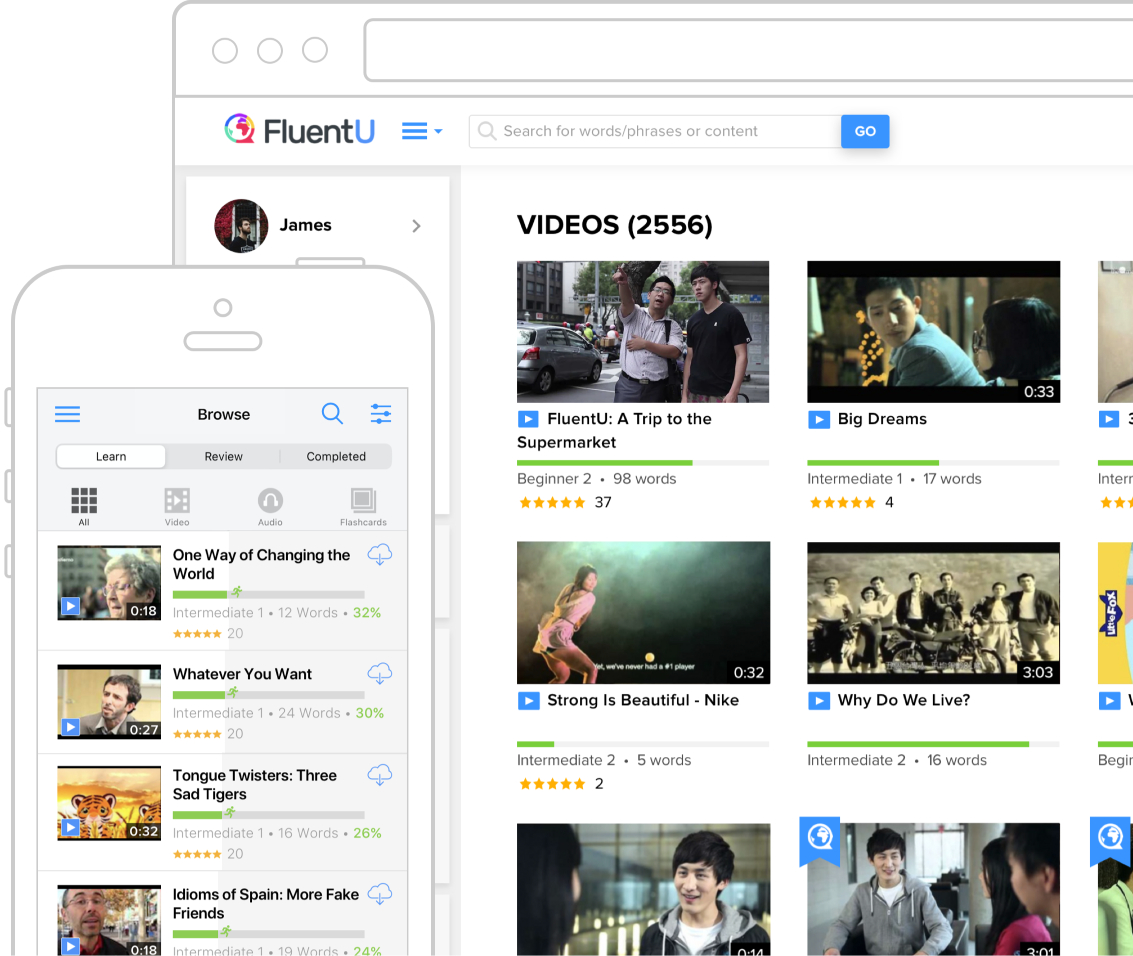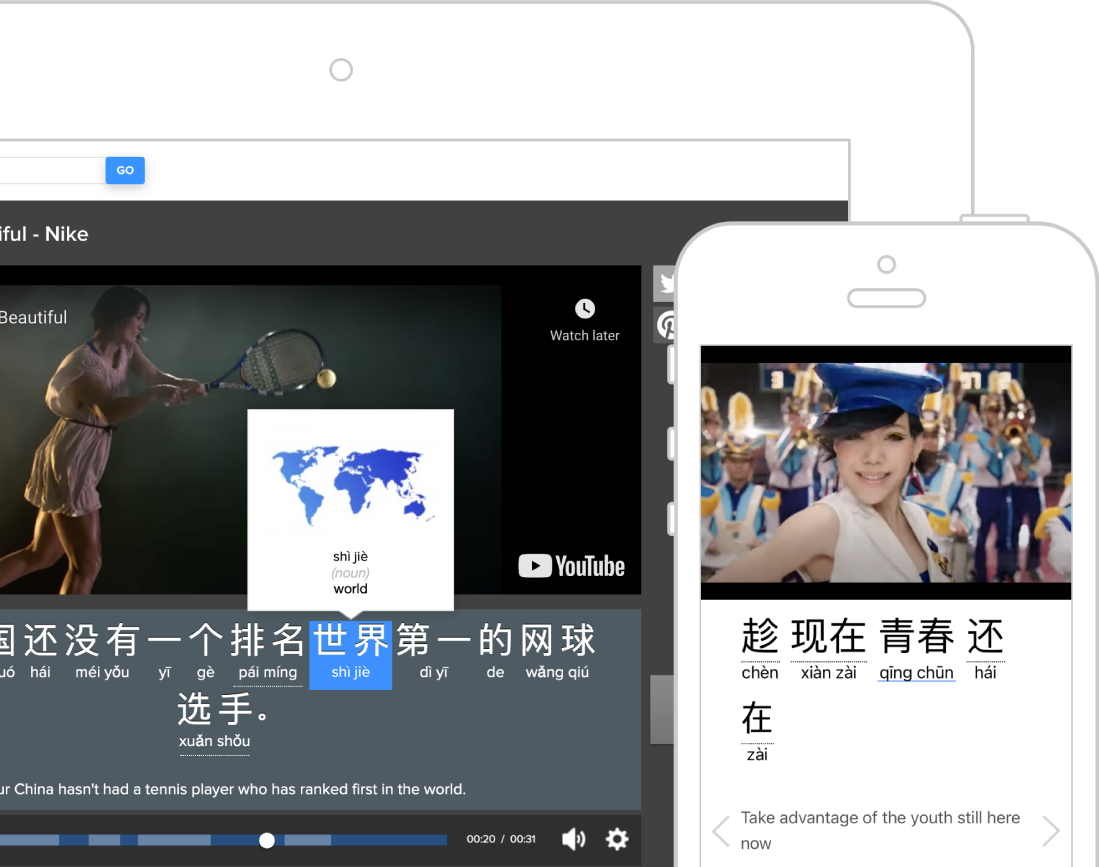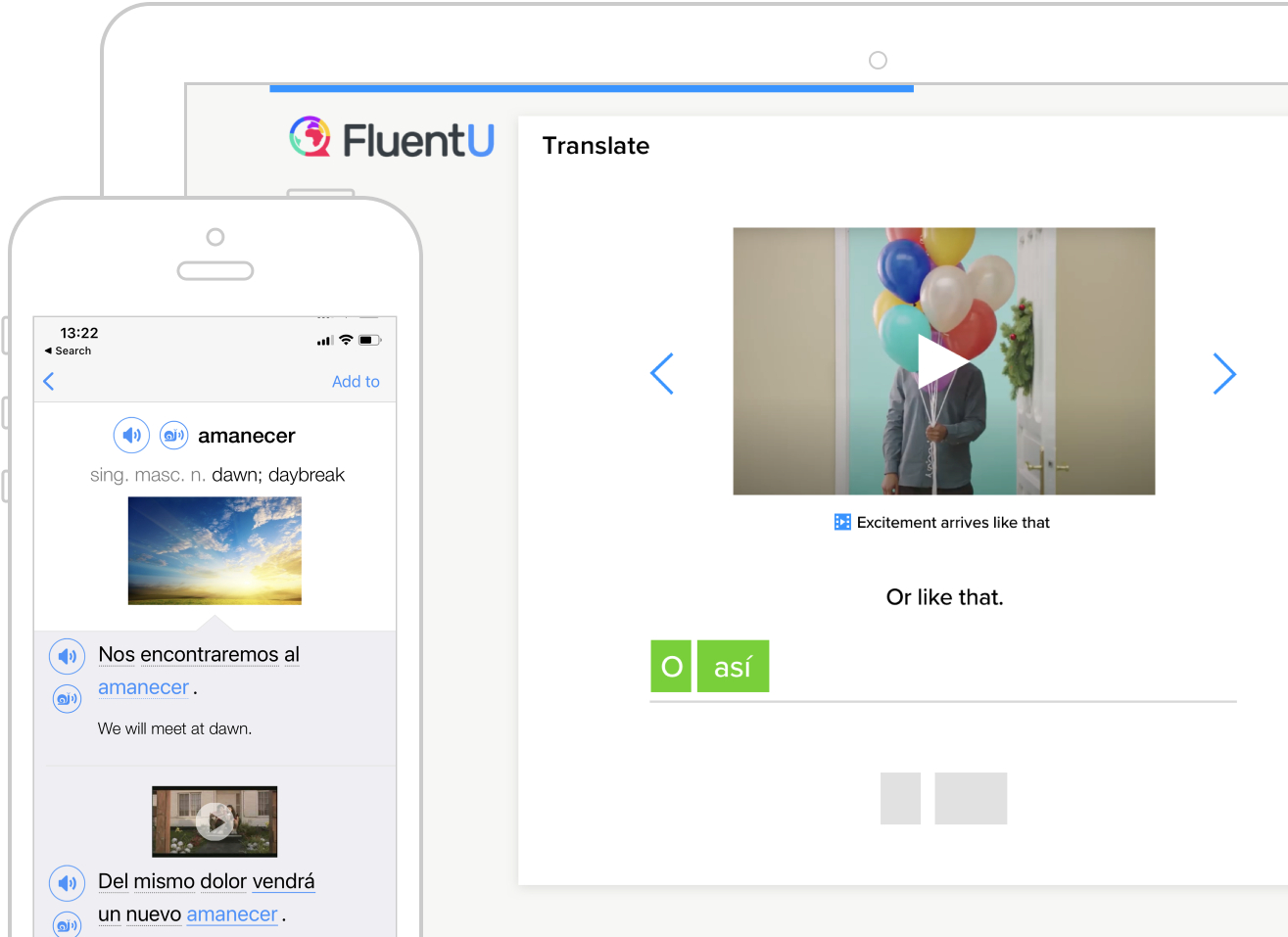How to learn Russian with movie clips, music videos and cartoons on FluentU
Watch authentic videos, curated for all levels of learners
There's plenty of interesting Russian video content that you haven't discovered yet, from iconic Russian movies to popular songs.
At FluentU, we've searched far and wide for high-quality Russian video clips and added study tools to these–so you can have fun while learning the language.











